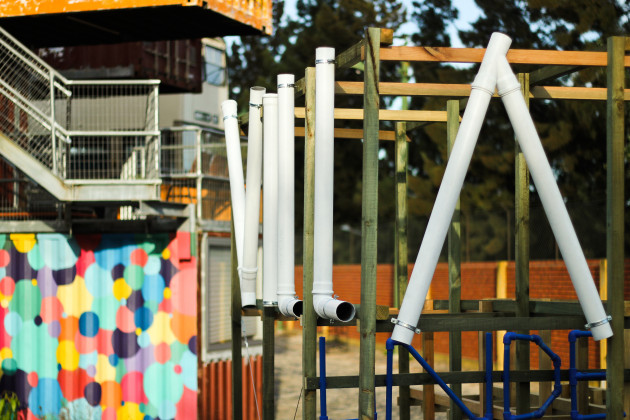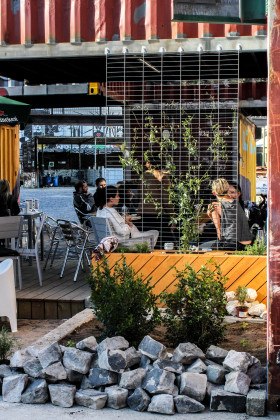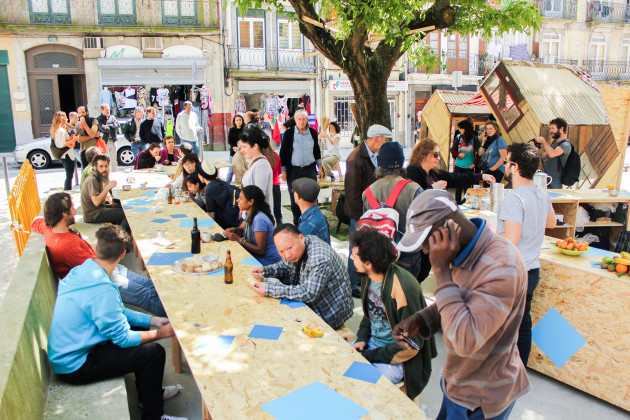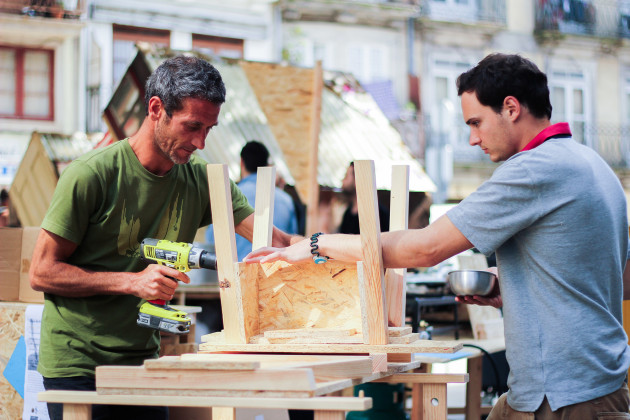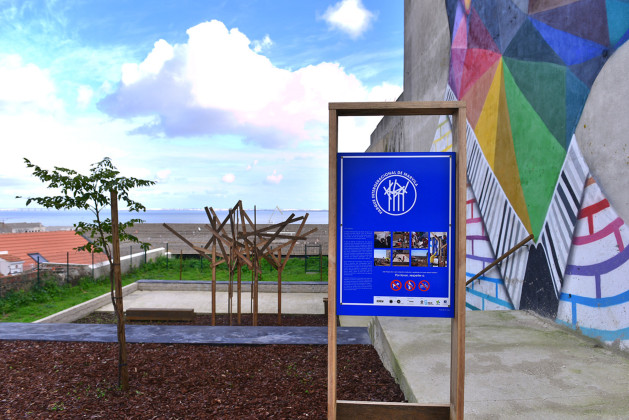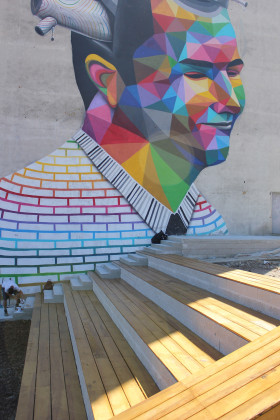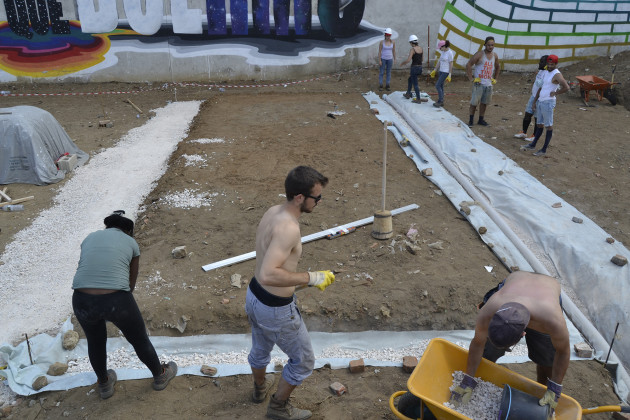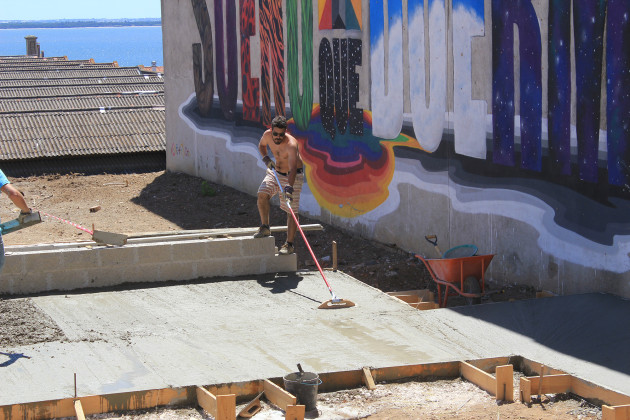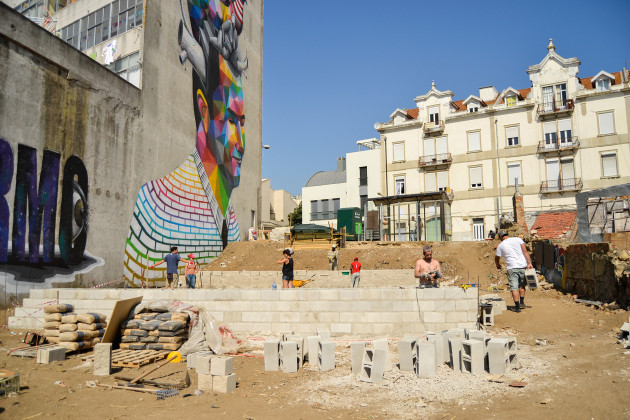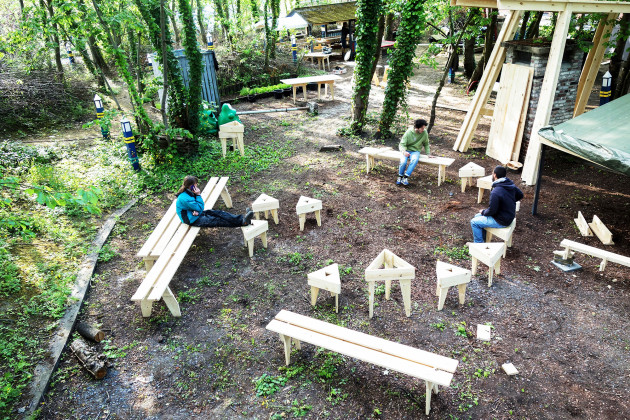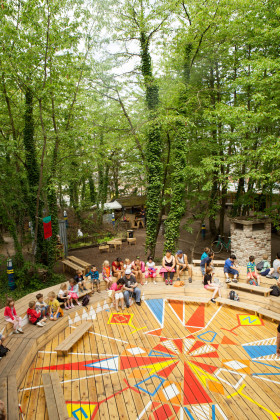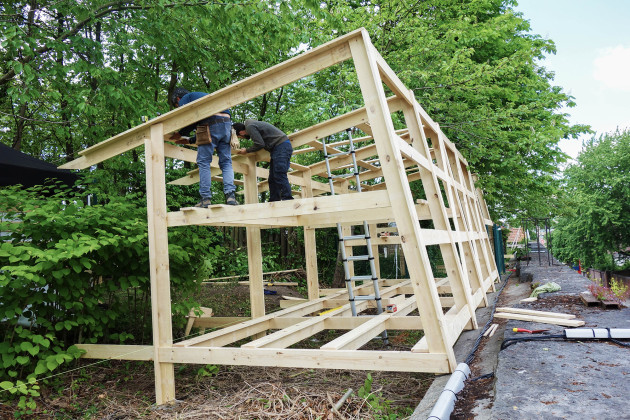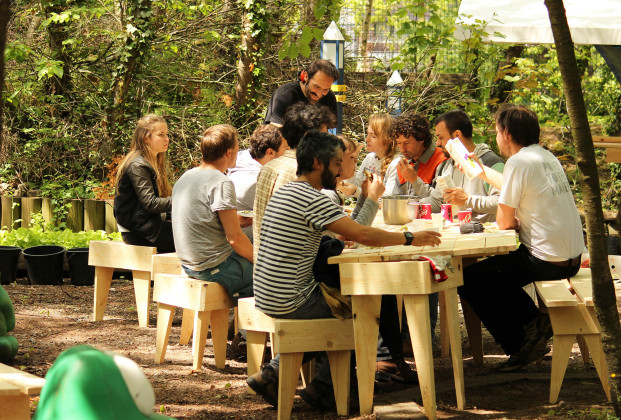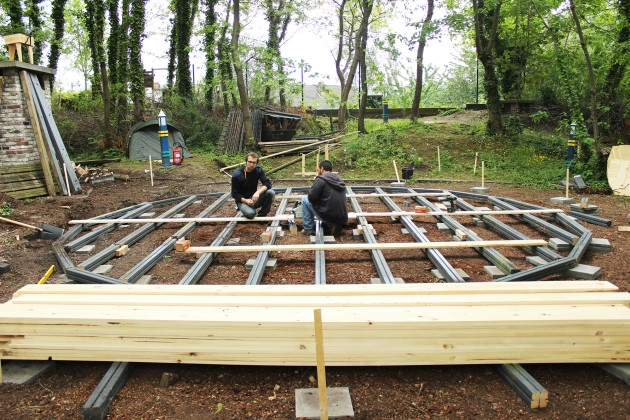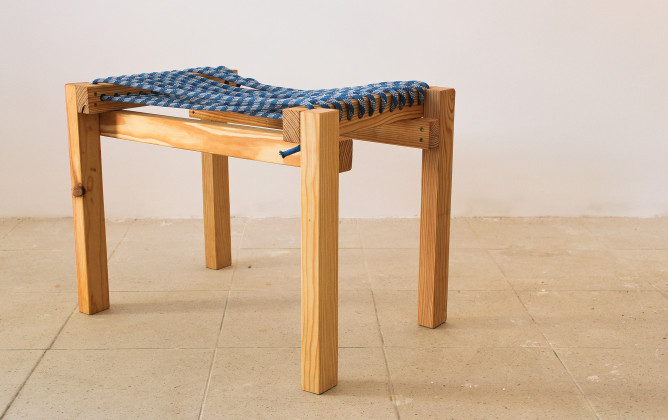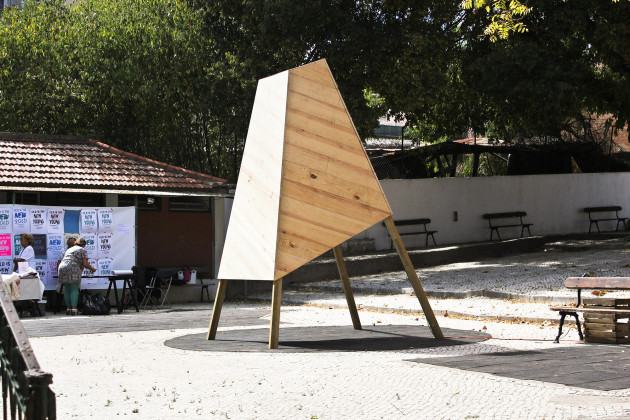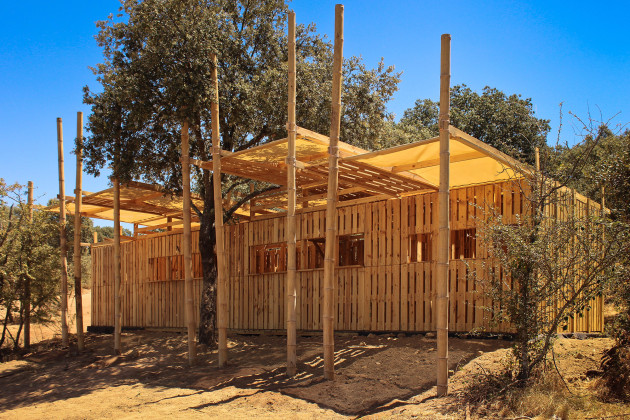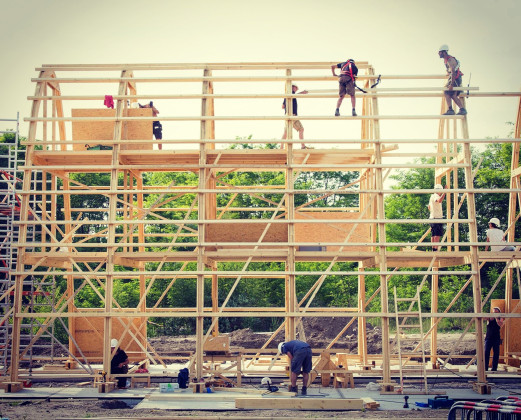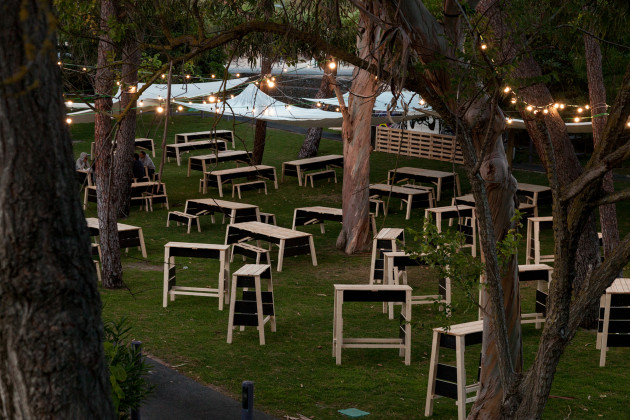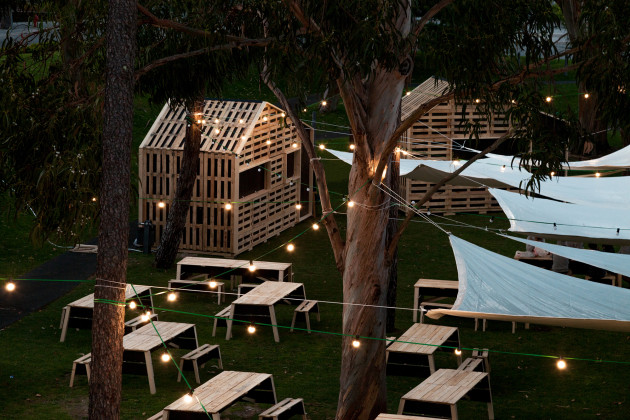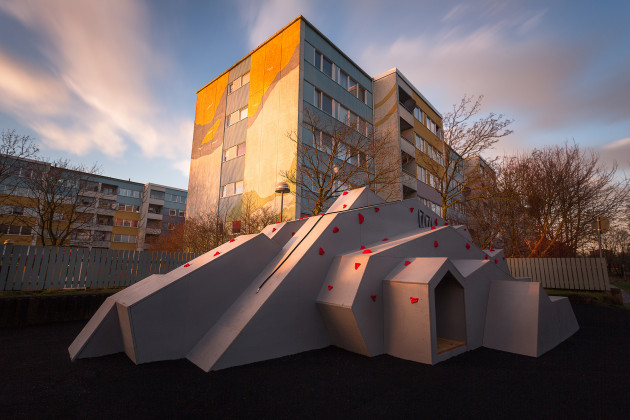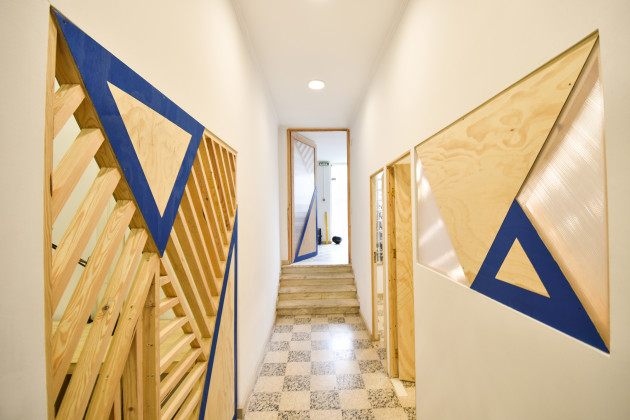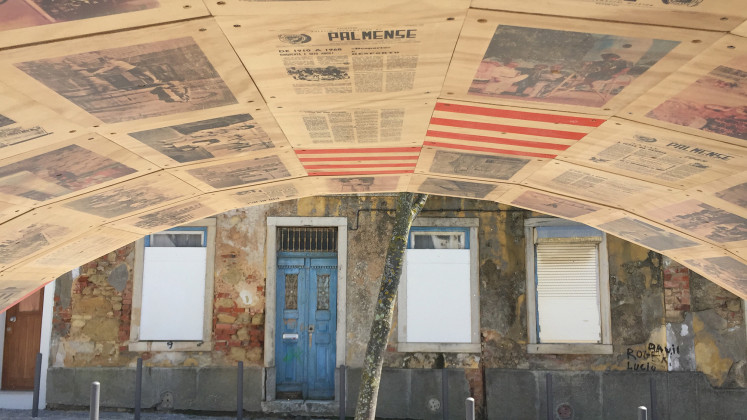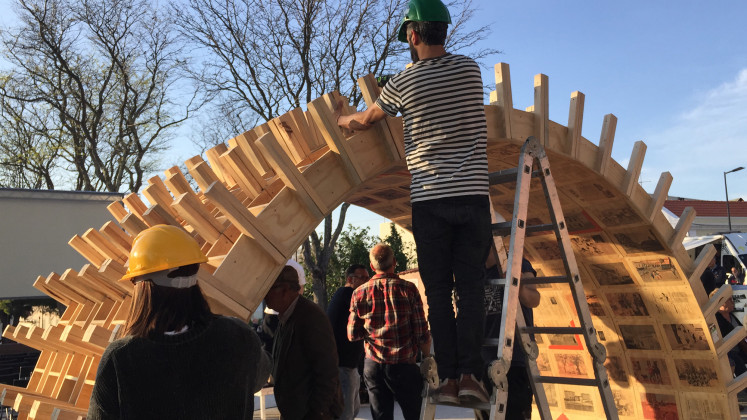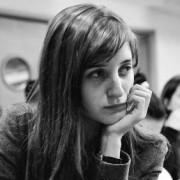Discovering the B-side of Architecture
Sebnem Soher talked with Sebastiao de Botton from Colectivo Warehouse on co-creating, self-critique and the afterlife of spaces
Sebnem Soher: Let’s start with who Colectivo Warehouse is. Who founded it, what is the background of the team members?
Sebastiao de Botton: We are three members now. The collective happened at the end of the architecture school. We went to the same university, Lusíada University of Lisbon. I was in the 4th year, and Ruben and Ricardo were in the 5th. They were writing their thesis at that moment. And it was the moment when you are neither studying so much because you don’t have a project, nor trying to find your place in the market. So for them, it was interesting to rent a space and then invite some friends, colleagues from the university to work collectively and look for work opportunities.
They’ve found a small space, small but interesting space, not far away from the university and the idea was to have a laboratory where you could either do some works for the studies or you could get together with some members of this task force to engage yourself for competitions or even for some commissions. If we were lucky, maybe some family or some friends would have commissions for us.
It was the start of an architectural office, without knowing where to go, what to do or what kind of architecture to practice. It would just give us the time and the chance to get together and to look for opportunities and think about possibilities.
SS: Back then was it also the three of you like a core team?
SDB: No, in the beginning, maybe Ruben and Ricardo contacted ten people, and we ended up being seven or eight. The good thing was that the rent was so easy to pay with 7-8 people. They made some initial investments like electricity installation, and then the collective did their first project, the interior renovation of the office with some painting, furniture, and the basics. Later with time, the group of people became much smaller, because there were not so much job opportunities and people began to get interested in doing other things.
SS: What was the year when all of these were happening?
SDB: This was the year 2013, early 2013, in February. Although we had a big space at the university to build models and get together, the fact that we had a private space, increased the commitment and people liked to be there as a job. What happened afterward is of course, very curious: The team started to shrink because we were not making money. But when people began to leave, it was also the time when more work started to come, so it was good timing for us to be 4 and then we had the opportunity to do the community kitchen project with ateliermob which increased our job opportunities afterward.
SS: How did that happen? I am very curious about the collaboration. Last year we had an interview with ateliermob and talked about the project.
SDB: We received this e-mail, and I don’t know how we received this e-mail from that great project in Cova do Vapor and Ruben was interested in it. He wanted to go there and meet those people. He went with a former team member, who is not with us anymore, spent the whole day there. This is how they met with all these people -architects, artists- who were working in Cova do Vapor. When they came back, they were excited, and they wanted to get involved. All the process happening there; the recuperation of wood from another project in Guimarães, the construction and the art installation, this space where people were meeting, and the exciting cultural happening made us excited.
This was during the summer, and it was temporary but by the time ateliermob was already looking for funding and working on the idea of building a community kitchen and they thought the people who worked in Cova do Vapor would be an excellent team to go ahead and proceed with the community kitchen. In the meantime, all the people from Casa do Vapor were back in their home countries, but they said, there is a young collective, which is just formed and capable of giving a hand. A lot of people met there, and it created this networking bomb, that exploded in Lisbon, and people learned how to work a little differently. We discovered this b-side of architecture, that is a little bit more artistic and cultural. After that, we built our practice step by step with the same mindset, with similar goals.
SS: What was the difference regarding the general environment in Portugal back then?
SDB: At that time, there were no commissions in Portugal, and people were flying away. They were all going abroad. We were finishing our studies, and we were a little scared about our future. It seemed like we had two options: Either we would start working on one of those big architecture factories in a badly paid position, or we would go to other countries, again to work for big companies and then in ten years, we would maybe be able to come back to Portugal to start our practice. That is very common, especially among couples. Sometimes they go abroad and work in big companies for some years, and when they come back, they have the conditions to start their studio or people win some public competitions to begin with their careers. That is still very common here. Ours was a lucky start. We were bold, and we seized an opportunity.
SS: It sounds like luck combined with survival instincts! So let me ask like this: How does your survival as young architects, who are just introduced to the market conditions, match with people who need your services? In that case, you were fortunate, but you said that it turned out to be a strategy in time. How do you find your clients or the people you work with ever since? How does this strategy work?
SDB: I think it happened gradually. After the kitchen -also because of the good strategy created by ateliermob, to work with a photographer like Fernando Guerra- both the community and project had high visibility. After that, sometimes people contacted us, and even though we don’t advertise that part so much, we also do conventional architectural jobs, like private commissions. Sometimes we work for friends of ours when they ask to do, but most of the cultural and social projects we are involved are consequences of a network which has also been evolving since the kitchen. In time we learned how to position ourselves, to attend some meetings, some European gatherings. For example, when people invite us to make presentations, give lectures, we make all of them. That also created some network naturally among universities and project developers.
SS: Is it like the more you are in a network, the practice transforms you. It’s not like you started with an ideological stand or a specific goal, but the more you are involved, the more you become interested.
SDB: More or less. But there are some guidelines which were always present. Generally, we work with people’s involvement. We think that an architect should become like a mediator between several parts, which are institutions, the community, or the inhabitants, other artists or creatives working on that site. For example, we won funding two years ago to organize a festival, to talk about social housing in Portugal. So, sometimes we propose ourselves with some idea we have, and sometimes it comes through the network with a scope that is already defined, and we try to find what can be our part in it and participate in it. And sometimes we are asked for a particular and completely designed job, and in that case, we are only manpower. That also happens.
So there are several types of engagement. But our guidelines are participation, engagement, working closely with people on site. In most of the cases, we design solutions, and we test them on-site, and some things have to change because things don’t always work out as we plan them in the office. That happens a lot.
SS: This will lead us to my next question, which is about your statement on your website. You are talking about different types of models, and there you mention collaboration and co-creation. Are you more inclined to one than the other? I don’t know what is the difference exactly.
SDB: I think we are into both and the second is inside the first. On the website, we have co-creation, and we have experimentation and other some other definitions that we tried to resume about our practice, but I am not sure if collaboration is inside co-creation or vice-versa! It is mainly the idea that a project is more prosperous if the full process includes more people than its authors. And the point is that we are no so preoccupied with the ownership. We are much more interested in working with other architects on-site and with the workers. Sometimes the answer comes from a specialized worker, let’s say a plumber or an electrician, a carpenter, or an artist. And sometimes it happens to work with students, which is another category in our practice called “tutoring” where co-creation is very active and exciting. When tutoring, we don’t assume the part of a teacher who knows the solution, we are very horizontal in that approach, and we look for the answer collectively.
SS: Sometimes, it’s hard to find a mutual language for different disciplines to communicate because of the diverse backgrounds, knowledge, etc. Could you tell one of your experiments with horizontal learning? How does it work on-site with students, artists, different specialist?
SDB: A tutoring project with Chalmers University, Sweden, we did two times, each time with 5-7 students. The goal would be to coordinate the design process until the end of the construction of a small structure. We were invited to coordinate the project, but the main idea was that the students learn how to control the project by themselves. Each time it was more or less the same model: We had some skype sessions, where we discussed the general design lines and what they wanted to propose, how the participation process was going on with the community. We gave some suggestions, because we have a little bit of more know-how in technical solutions, in how to transform their design into reality. We just gave a little twist to their design and showed a possible way of building it.
During the design process, two constraints became premises. One was the pretty defined regulations for a playground in Sweden, and we worked with a specialist for that. The second was the material. Emílio Brandão, a teacher from Chalmers, recuperated hundreds of logs and he didn’t know what to do or how to work with those. That was an opportunity because it was a leftover material. We were concerned because we never worked with the round section of the wood. We used to work with wooden planks. Later, in the design process, a brilliant idea came from one of the students, who suggested that we use the logs in smaller pieces, cut in 2-3 cm cuts, like cookies, so that we could use them for the coating of the pavilion. I thought that was such a bright idea. This lateralization of the problem and the source of it was co-creation at its best without thinking whose role is what in the story.
SS: I have read about a previous work you did in a festival, where you worked with collected bottles I guess. What is the story behind the project and why you chose that material?
SDB: It was a collaboration with an architecture office from Lisbon, called KWY. Superflex commissioned them and made this big exhibition about some architectural models of luxury stores in Japan, such as Dior, Miu Miu, Prada and Tod’s. After that, they were commissioned by Roskilde Festival in Denmark to make an artistic intervention in the art zone and recreated these models at a bigger scale. Then content and program were added to give meaning and purpose for each pavilion, such as people collecting bottles during the festival as an eco-friendly move. That was another example of collaboration. We got the briefing, and we adapted the design to pre-produce everything in Portugal and ship to Denmark.
SS: There are two remaining questions that I would like to ask. The first one is, related to being critical, the critical side of your different projects, and your practice. When we look at Jane Rendell’s writings, she talks about social critique, self-reflection, and social change. When I go through your projects, I find it easy to relate these three concepts to most of your work. Do you find it essential to be critical, to be a generator of change?
SDB: We look at every project as a new challenge. We try to understand the story behind, what is the context, and what can we bring to it. We try to contribute that makes sense. In most cases, it’s essential to start a dialogue, to test a little bit, if the first ideas make sense or not. There is always this awareness, a wish to do something positive: How can we bring to this context, something that is first of all well designed, looks cool, beautiful, and makes sense. Secondly, something that can be appropriated by people, mainly because they get engaged by doing it. When they get engaged, they have a sense of belonging, and they take care of it in the future. We want to do what’s relevant. So it’s not our first aim to be critical and generate a position of change-maker, but unconsciously we do it.
SS: You are also thinking about the afterlife of the space. Why do you believe appropriation, that people take on when the design and the construction finished is important?
SDB: This is related to the question you asked before. If you create something socially relevant, then you want it to last longer and become something more than the initial meaning and purpose of the project. For me, the most meaningful project I participated in was the Constructlab project for the European Capital of Culture 2015 in Mons. Very basically it had the aim to bring a public park back to the community. It was a park with problems such as having only one access, being quite dark and isolated. So they just closed it for around ten years, because it was considered unsafe by the municipality. With the European Capital of Culture, Constructlab saw an opportunity to propose a project, which incorporated the construction of some infrastructures and a cultural program for this park. With not so much money - compared to amount that usually spent in public works contracts - it was possible to design good and quite resistant structures, that could be adapted on-site, a very simple program: A kitchen, an agora, to have discussions, to dance, some production workshops, playground for kids, places for people to be able to sleep there for some time. With all these little interventions and events, you can get the attention and interest of people to an abandoned space. Little by little, they started to get involved, to propose things. There were a group of people who joined the working site and built an earth oven to do pizza and bread. So we lived there and built a “small village.” We have explained the goal of the project to every passer-by when having lunch together with the team and members of the community for three weeks in the park. But what matters regarding your question is that because of this involvement and energy, people created and still have an association that takes care of the park and organizes activities for everyone.
SS: How do you detect what is needed? What are the tools to reach a community or to come up with the initial idea?
SDB: Let me give you another example; another project we did with ateliermob. It was in Marvila Velha, a neighborhood not far from here, where most of the people are old, and there are no kids. Looking at the municipality’s regular data, the statistics, you would conclude that there’s no need for a playground because there are no children there. That is why it’s so important to do background work. It’s relevant to understand what is the real situation to go beyond what we think or learn about a place and the people.
We entered the project a little after ateliermob did the first research and proposal. We joined the project to coordinate a workshop with students from Lusófona, from 1st and 2nd year. The idea was to build a little auditorium and mix it with devices for children to play so that their grandchildren could visit the grandparents in this space. It was five weeks of workshop and building. Unfortunately, it’s not so much used today, because we lacked interaction with the community in our building site. We didn’t think of; how important it was to have some activities during the building. We focused on building it because of the deadline pressure to have it ready. The timeline and the budget were tight, and we didn’t have so much chance to maneuver. What we learned from that project, when we had the self-critique on ourselves, that we could have built four stairs instead of 5 and with the money of that one step, we could have organized barbeques, a party, which would bring involvement and that would affect the outcome. If you go somewhere, do your work, drop a designed object and get out of the picture, it doesn’t matter if you are doing a workshop with university students and somehow the format is more exciting and innovative. At the end of the day, if you lack involvement and understanding of the project by the community, it is not different than the municipality doing a project. It’s just dropped there.
SS: So are you saying what matters more is the involvement of users?
SDB: Yes, because it is the validation of your idea. In any technical field, professionals think that they know what makes sense. But actually, you have to see if it does or not, because like in this previous example, it might not be that obvious.
Or that case in Sweden, we looked at logs and asked ourselves what are we going to do. We went there, we walked like 15 minutes in the cold, and when we saw them, the logs were there, but they are completely wet. We thought that this would never work out. But then a student came up with this idea, and we did it. Putting those chopped log cookies between wooden slabs, provided some transparency, which was what the students had as a reference image. But everything interconnects sometimes, and the answer starts appearing step by step and things work out.
Related Content:
-

Let's Pastrami
-

Quake Museum
-

TM8
-
Seeds of Awareness
In the guidance of Michael Leung, this interview looks into a collective movement that flourishes at a street stall in Hong Kong as a reaction to the current development plans
-

Collective Challenges
 03.09.2019
03.09.2019



